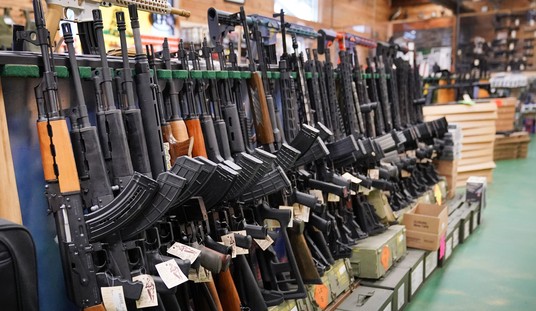In this series we are looking at ways the Biden/Harris administration may look to "Trump-proof" many of their executive actions restricting our Second Amendment rights. It's important for gun owners to understand the game being played. A game that will only get more involved and serious if Kamala Harris is elected to the White House.
Under the Biden/Harris administration, the fight over gun rights in America has taken on a new angle: redefining gun violence as a public health crisis. This shift in strategy isn’t just about addressing crime or ensuring public safety; it’s about using the language and tools of public health to justify sweeping executive actions that could undermine our Second Amendment rights. For gun owners and pro-Second Amendment advocates, this is a critical moment that demands our attention and action.
In the first article, I provided an overview of the steps that the Biden/Harris administration has taken since they took office in 2021 to curtail our Second Amendment rights. From expanding ATF enforcement, influencing public perception by labeling gun violence as a public health crisis, to ignoring the Administrative Procedures Act, the Biden/Harris administration has left no stone unturned in their efforts to infringe on this civil right.
In this article, I'll focus on the steps Biden/Harris are taking to call gun violence a public health crisis and to use the vast federal regulatory machine to create restrictions across federal agencies and to extend their regulatory reach into academic research and even to change the relationship you have with your doctor. But the Biden/Harris administration will not be satisfied unless they can make their policies "Trump proof".
A Public Health Crisis? The Administration's New Playbook
The Biden/Harris approach to gun control has been clear: bypass the gridlock in Congress and push as many changes as possible through executive action. But what’s new is the framing of gun violence as a public health crisis—a tactic that allows for broader and potentially more intrusive government intervention. By shifting the narrative from crime and individual responsibility to public health, the administration is setting the stage for regulations that could fundamentally alter the landscape for gun owners in America.
Here’s how they’re doing it:
- Funding and Framing Gun Research: For decades, federal funding for gun violence research was limited due to the Dickey Amendment, which prohibited the CDC from using funds to advocate for gun control. Recently, however, the Biden/Harris administration has ramped up efforts to support research treating gun violence as a public health issue. This research is used to push narratives that promote restrictive gun laws under the guise of “data-driven solutions.” The problem? These studies often ignore the benefits of lawful gun ownership, focusing solely on negative outcomes while setting the stage for biased, anti-gun regulations.
- Executive Orders and Regulatory Overreach: Biden has signed numerous executive orders that claim to address gun violence through a public health lens. These actions include cracking down on so-called “ghost guns,” reclassifying pistol braces, and expanding the use of community violence intervention programs. Framing these measures as emergency responses to a public health crisis allows the administration to circumvent Congress, making it easier to impose restrictions that could infringe on our rights without the checks and balances of the legislative process.
- Public Messaging: Spinning Gun Control as Health and Safety: From press conferences to policy briefings, the administration consistently frames gun violence as akin to an epidemic, comparing it to crises like the opioid epidemic or even COVID-19. This messaging isn’t just about awareness—it’s about conditioning the public to see gun control as a necessary response to a health emergency. By doing so, they’re trying to normalize the idea that restricting gun rights is part of a broader public health strategy, rather than a controversial encroachment on our constitutional freedoms.
- Expanding Bureaucratic Influence: Beyond the CDC, the administration has roped in other federal agencies like the Department of Health and Human Services (HHS) and the Department of Justice to tackle gun violence as a public health issue. This means more layers of bureaucracy pushing anti-gun policies, with agencies that traditionally haven’t been involved in gun regulation now getting a say in how gun ownership is managed. The result is a sprawling web of regulations that make it harder for law-abiding citizens to exercise their Second Amendment rights.
- Community Violence Intervention Programs: Trojan Horse for Gun Control: One of the administration’s flagship initiatives has been the promotion of Community Violence Intervention (CVI) programs. While these programs are marketed as grassroots solutions to reduce gun violence, they often operate on the premise that guns themselves are the problem, not the criminals who misuse them. CVIs are used to justify funding and regulatory efforts that focus on reducing gun access, particularly in urban areas, without addressing underlying issues like crime, poverty, or inadequate law enforcement.
Here's the why they're doing it:
- Influence Public Perception: As we wrote in the first article in this series, the Biden/Harris administration, "aimed to shift public perception and industry compliance through sustained public relations campaigns and partnerships with compliant sectors of the firearms regulatory complex". For example, when you visit your family physician, your doctor may ask questions about firearms in your home. They may ask your children outside of your presence and without your permission. And there the public perception battle is won. Never mind that your doctor has no enforcement power, the mere fact that they are questioning parents about firearms at home is a win for gun control. By framing guns as a public health concern for public safety, supported by all of that public health data, they create a narrative that makes reversing anti Second Amendment regulations politically costly for future administrations.
- Institutionalize Infringement: Engaging multiple federal agencies in the regulatory scheme lends credence to each of their efforts. As I wrote in the second article in this series, a proposal by the Biden/Harris administration to eliminate lead from ammunition was not really an attempt to address environmental concerns about lead toxicity as much as an attempt to restrict the availability of lead ammunition for gun owners. It was an attempt to institutionalize infringement across federal agencies and federal regulations. This makes unwinding the tangled web of federal rules across multiple agencies that much more difficult for a second Trump administration.
Implications for Gun Owners and Second Amendment Rights
What does this mean for us, the law-abiding gun owners who simply want to protect our families, enjoy our sport, or exercise our constitutional rights? It means that the Biden administration is using the public health narrative to do an end-run around Congress and impose a wide array of restrictions that might not pass muster in the legislative arena. This approach sets a dangerous precedent, allowing unelected bureaucrats to reshape the landscape of gun ownership in America through regulations, rather than laws passed by our elected representatives.
When gun violence is framed as a public health issue, it allows for emergency powers and executive actions that could infringe on our rights without the scrutiny and debate of the legislative process. This framing doesn’t just impact policy—it changes the conversation, stigmatizing gun owners as part of the problem rather than recognizing us as responsible citizens exercising our fundamental rights.
Moreover, this public health approach often glosses over the real causes of gun violence: criminals who break the law, not the guns themselves. By focusing on the tool rather than the individual, the administration diverts attention from effective solutions like tougher penalties for violent offenders, better mental health care, and more support for law enforcement.
Standing Up for Our Rights
For Second Amendment supporters, this is a pivotal time. We must be vigilant against the incremental encroachments on our rights disguised as public health measures. It’s not enough to rely on the courts or hope for a change in administration—we need to be active in the regulatory process, voice our objections during public comment periods, and support legal challenges against executive overreach.
We also need to educate our communities about the importance of our rights and the dangers of surrendering them in the name of public health. Never forget the government response to the pandemic, Kamala Harris won't. If Harris wins the White House she will take lessons learned during the pandemic to crush the Second Amendment. Never forget. The Second Amendment isn’t about hunting or target shooting—it’s about the fundamental right to self-defense and the ability to protect ourselves and our families from threats, including government overreach.
The Biden/Harris administration’s strategy of framing gun violence as a public health crisis is a calculated move to shift the narrative and sidestep the usual checks on power. But as gun owners and defenders of the Constitution, we have a duty to push back, ensuring that our rights are preserved for future generations. The fight for our freedoms is ongoing, and it’s up to us to stand firm against any attempt to weaken the very foundations of our liberty.







Join the conversation as a VIP Member